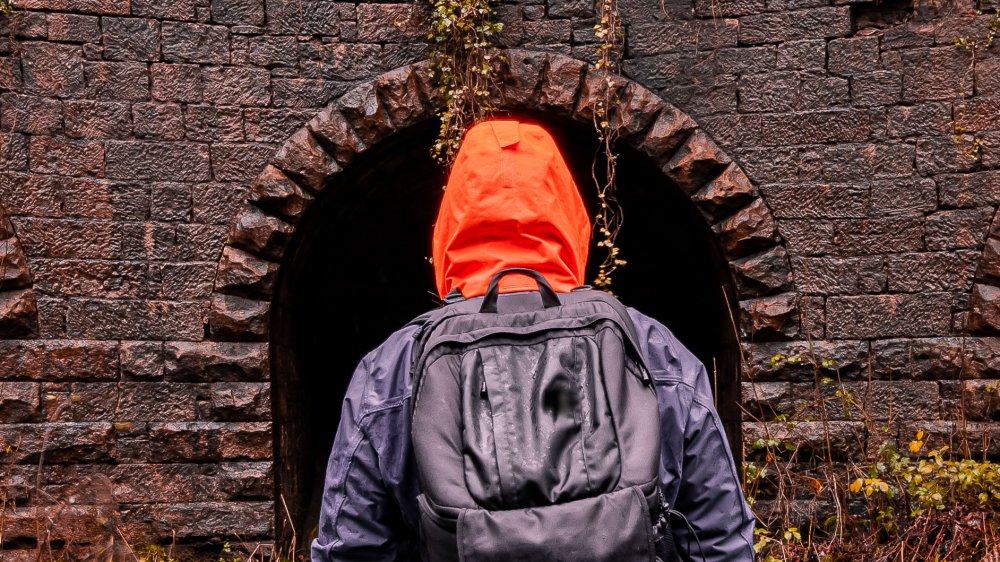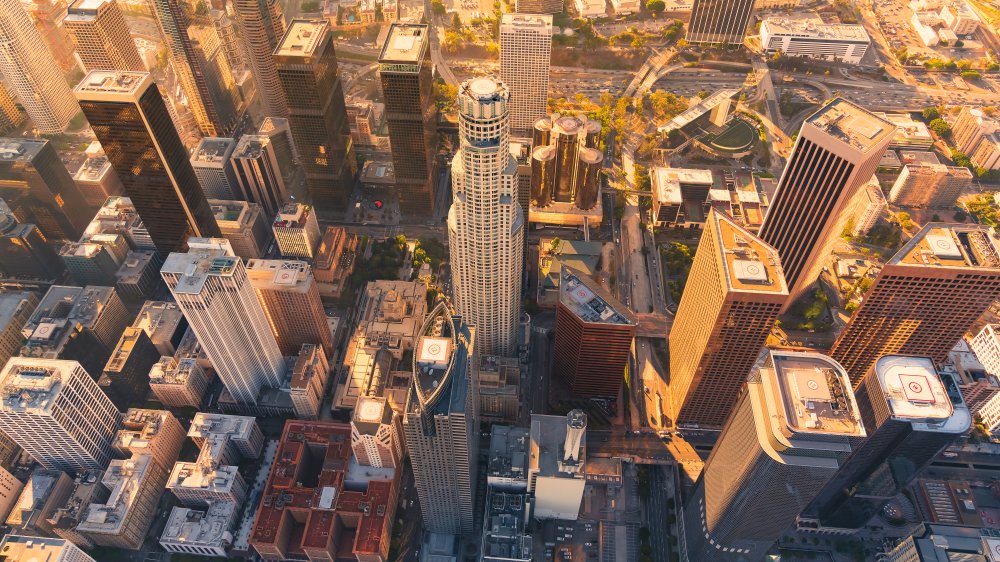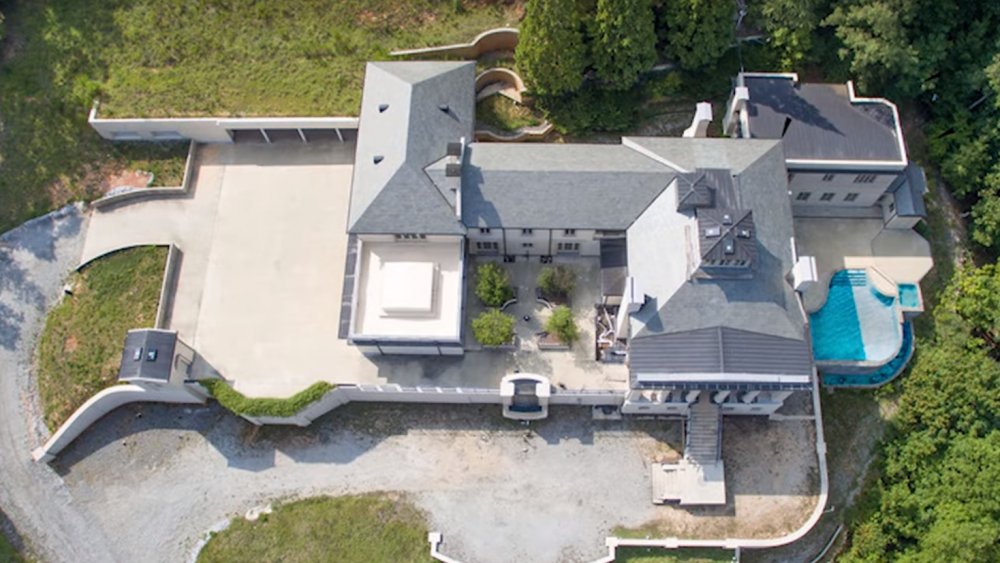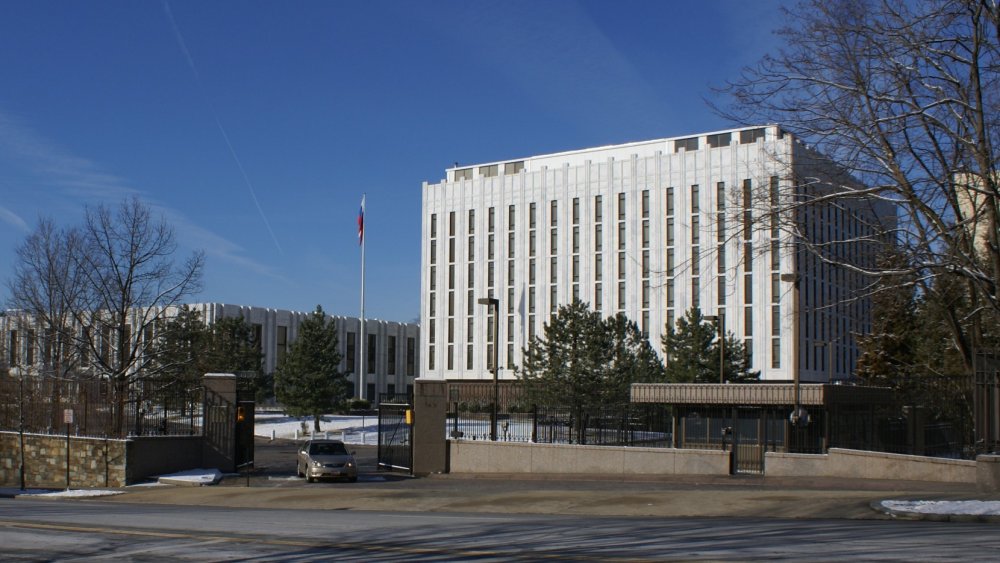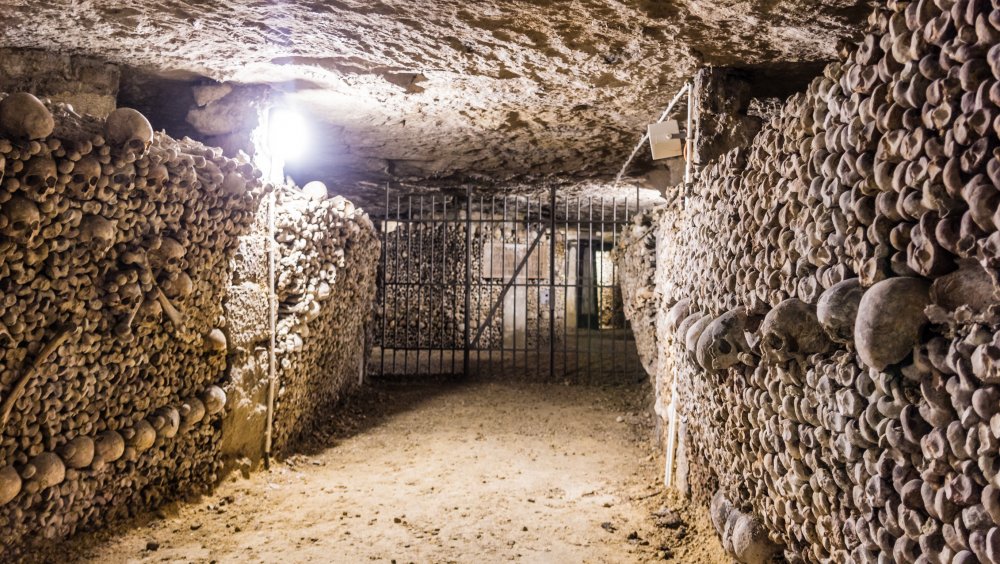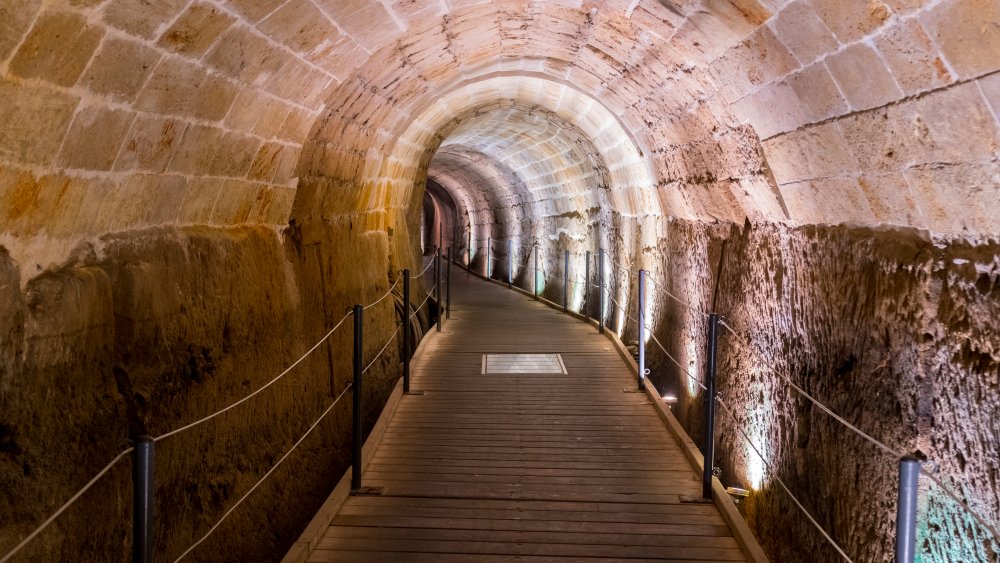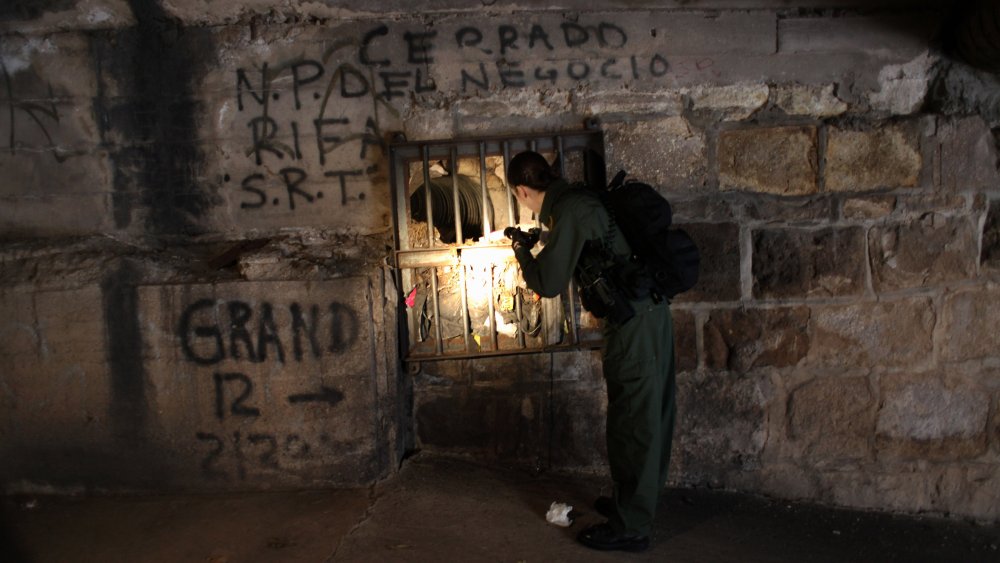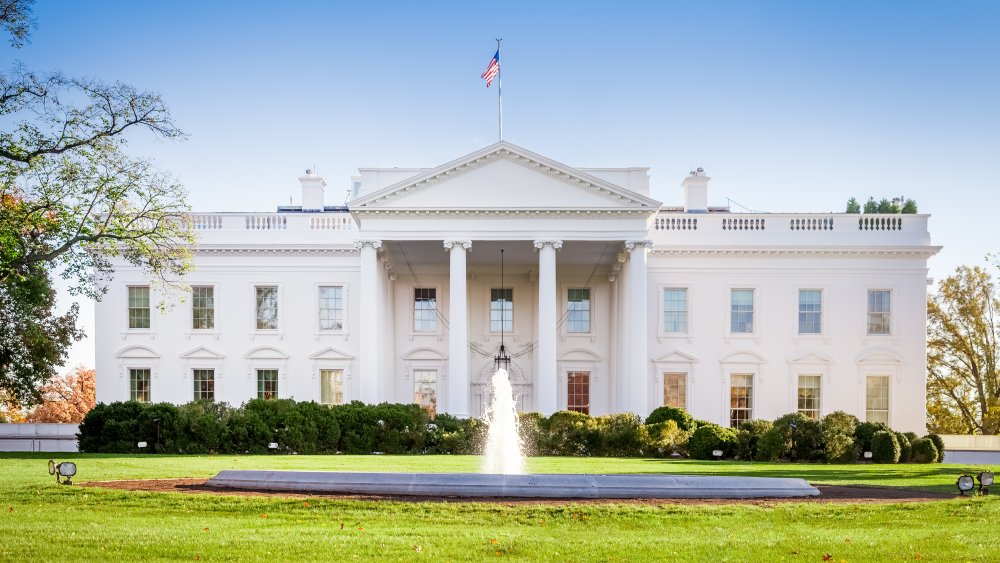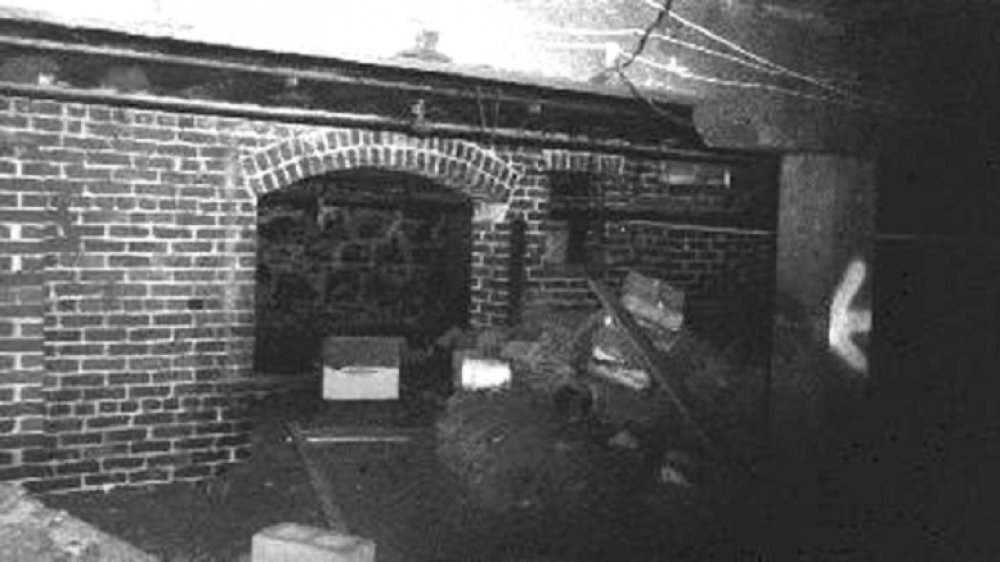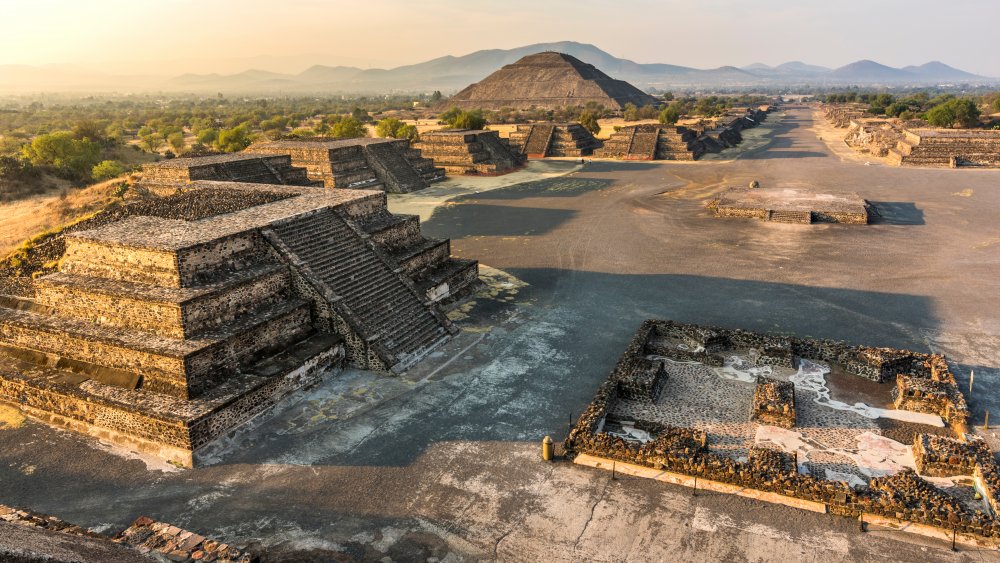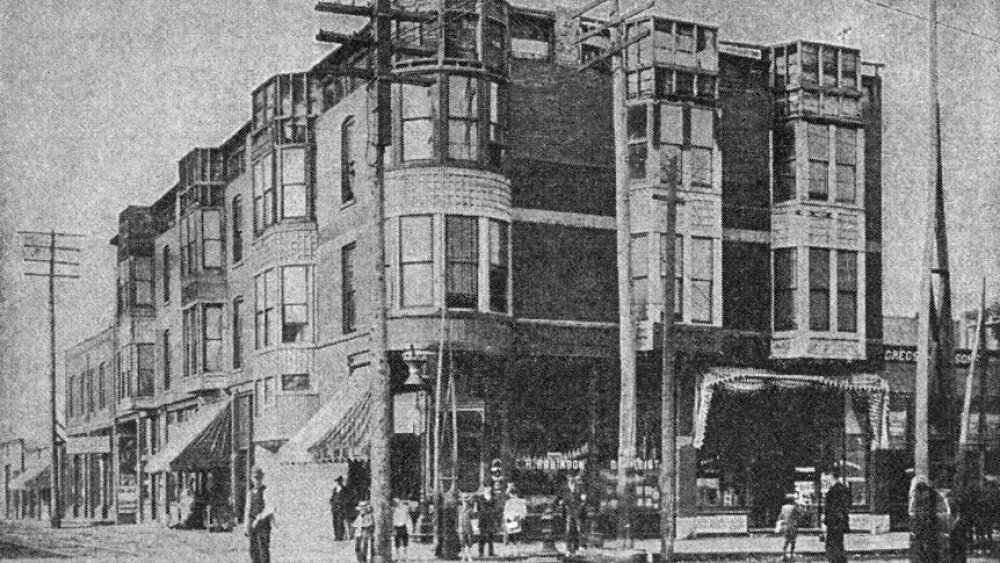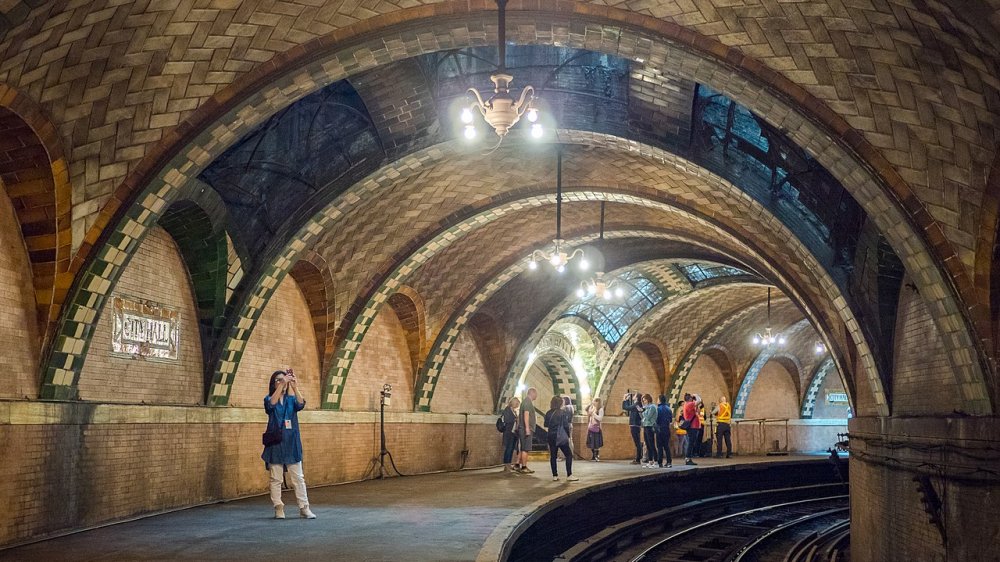Secret Tunnels That Lead To Strange Places
Now that technology has mapped the surface of the earth, it might feel like humanity is running out of places to explore, but we really don't know a lot about the world under our feet. There are miles of sewer tunnels, subway lines, maintenance access, and who knows what else beneath us at any given time. How many stories start out with someone finding a tunnel that leads to somewhere amazing?
That thrill of discovering something unknown is a huge part of being human and is a natural attraction to us. People used to live in caves, after all. As a child, you might have fantasized about having a secret passage no one else could find. They're even a feature of some houses today.
But in real life, those stories don't always end so nicely. Tunnels can lead to something ordinary, nothing at all, or in a few cases, something very strange.
Los Angeles had 11 miles of party tunnels
From 1920 to 1933, the United States banned the sale, production, or transportation of alcohol, a time commonly known as Prohibition. However, all throughout that period, illicit alcohol sales continued in secret clubs, colloquially known as speakeasies, and was illegally made or smuggled in by bootleggers. While it wasn't impossible to find alcohol, especially for the wealthy, it was certainly more difficult.
Los Angeles, CA had something entirely different going on, though. According to Atlas Obscura, the city repurposed 11 miles of service tunnels running below the streets and turned them into what were effectively party tunnels. Not only would visitors have access to the basements of speakeasies, but they could drink openly in these passages. Many of the former bars and saloons changed into what seemed to be legitimate businesses above ground while secretly selling booze below the surface.
What's more, the biggest supplier of alcohol in these tunnels was none other than the Los Angeles mayor's office. This wasn't a two-bit operation that could get busted by the cops at any moment. This was an underground alcohol theme park run by the city's leadership itself, and it went undetected by authorities the whole time. The tunnels still exist today, though they're now closed and unused, unless they've been repurposed again into a playground for some other illegal substance at one point or another and we just don't know about it yet.
A mansion near Atlanta comes with a massive secret bunker
Nothing says "secret passages" quite like a big, sprawling mansion. In the movies, rich old weirdos fill their homes with secret passages. Even the board game Clue has secret passages to make getting from one end of the house to the other much faster. We sort of take it for granted in pop culture that every massive house secretly hides a Scrooge McDuck-esque pool of money the owner can dive into.
In reality, actual secret passages are probably not a feature of most real estate listings, or if they are, they're simple affairs meant to evoke the idea of a secret passage without the cost, like a mini bar behind a bookcase. Not so for the Rice House Atlanta, a $15 million home in Alpharetta, GA, however. The mansion is, on the outside, your typical home for people with way too much money.
Inside, however, amongst the usual fancy home features and even things like a bowling alley and indoor gun range, are a series of secret passages leading to a 15,000 sq. ft. concrete-fortified bunker, complete with a command center and remote operated doors, according to Homecrux. Forget a panic room, this is a panic palace. The house was designed by global security expert Al Corbi, according to Curbed Atlanta, and is advertised as "one of the safest homes in America."
The U.S. attempted to build spy tunnels under D.C.
During the Cold War, paranoia was very real, and both the United States and Russia spent a lot of time and money on spying on one another, often with more and more elaborate tech and sneaky tactics. Some of the coolest tech we have today was originally built to spy on one side or the other during the second half of the twentieth century.
Amazingly enough, there was a Russian embassy in Washington, D.C. built in 1977. U.S. intelligence agencies launched a plan called Operation Monopoly to build a secret spy tunnel under the embassy, according to Atlas Obscura. They bought the residence next door, then began construction of the tunnel from the home's basement, from which they hoped to be able to eavesdrop on Russian diplomats.
This didn't pan out, however. The tunnel had flooding problems, and the equipment the American government used wasn't effective in picking up anything. While the tunnel cost a huge amount of money to build, in the end, it didn't turn up any intelligence at all. As if that weren't bad enough, a double agent inside the FBI actually told the Russian government about the tunnel before it was even finished, which wasn't made public until 2001. Much like the board game of the same name, Operation Monopoly ended with one player having lost a ton of money and everyone mad at each other.
A city of the dead lies in secret tunnels below Paris
Paris is the city of romance and beauty, but it also contains miles of tunnels running beneath the surface. These tunnels were originally dug into the limestone under the city in order to mine for the materials that would eventually build Paris itself. After the city was built, the tunnels went largely unused until the 17th century.
1600s Paris had a real problem with odor. Specifically, the smell of rotting corpses, because its small graveyards were overfilled with the dead of a city that had far outgrown its cemeteries. Kings Louis XV and XVI both tried to order people to bury their dead outside of Paris, but neither was successful. It took a cemetery wall collapsing in 1780, spilling corpses into the the streets, before someone had the bright idea to take all of those bodies and stuff them into the unused limestone tunnels.
Now called the Paris Catacombs, these tunnels are chock full of the bones of those relocated under the ground. It took 12 years to move them all, according to Smithsonian Magazine. Creepiest of all is the warning sign put up at the entrance to the Catacombs: "Stop, this is the empire of death!" These days, the tunnels are inaccessible except for a small portion open to tourists. That doesn't stop people from breaking in, of course.
The Knights Templar hid their spoils with secret tunnels
The Crusades, a series of long wars fought from the 11th to the 13th centuries, were the result of European Christians attempting to remove so-called "infidels" from the holy lands of Israel so they could claim it for themselves. There's a very long and dark history there, but needless to say, they were bloody conflicts still echoing into the modern day.
Most fearsome among the Christians were the Knights Templar, who you might have heard of if you've watched any of those corny basic cable history shows. While there are many myths and legends floating around with the Templars, we do know they killed a lot of people and pilfered a lot of gold and other spoils of war, and historians have only recently discovered what they did with it.
The Templars have long been rumored to have a "treasure tower" they kept all of their loot in. It turns out, it's real, and it was discovered in 2019 under the city of Acre, Israel, according to The Independent. Most fascinating about the discovery is the tower had no visible entrances or exits. Instead, a series of secret tunnels led into the tower from their nearby fortress, meaning the only access was via hidden underground passages. The tower itself is still buried under meters of earth, so we'll only get to see what's inside if future excavation is approved.
Nogales, AZ is America's drug tunnel capital
Tucked away at the very southern border of the US is the town of Nogales, Arizona. Directly across the Mexican border is the other half of the town, Nogales, Sonora. As a border town, Nogales is highly involved in illegal drug smuggling from Mexico to the United States. It's not as simple as just passing drugs from one person to another and walking over the border, though, as Nogales does have a wall separating the two cities.
Instead, smugglers have decided the best way to pass drugs between the two countries is going underground. Nogales has had hundreds of drug tunnels discovered by border patrol and the DEA, sometimes multiple tunnels a week, according to KGUN. Many of the tunnels are simple dirt tunnels, with openings about 4 sq. ft., small enough they need to be crawled through on your belly.
There are more elaborate tunnels, too, many built into the drainage system beneath the towns. In 2019, authorities discovered a tunnel reinforced with wood and steel and with a functioning ventilation system, according to Arizona News. You might have rooted for Walter White on Breaking Bad, but imagine a whole town of people like him and his associates constantly trying to find new ways to to get their illicit drugs into the hands of addicts and you might start to see the scale of what's going on here.
The White House has a secret bomb shelter
When the attack on Pearl Harbor occurred on December 7, 1941, the United States had a rude awakening to the likelihood of attacks on American soil. Since the country was founded, direct attacks were pretty unlikely, as traveling across the ocean was expensive, dangerous, and took a very long time.
However, an aircraft carrying a bomb (or later, missiles) over U.S. territory became more likely as World War II raged on thanks to new technologies. At the time, the White House was not in great shape, built largely on a wooden frame very susceptible to a bomb attack. U.S. officials thus came up with a plan. A secret tunnel would connect the White House to the U.S. Treasury Department building next door, according to Atlas Obscura. As a newer construction built to house valuables, it was far sturdier than the White House. Underneath the building was an apartment suite specifically for hiding President Franklin D. Roosevelt and his family and staff.
This bunker was only meant to be temporary, as the White House quickly began to build a shelter on its own grounds, and it's no longer in use today, which is presumably the only reason we even know about it. Successive President Harry S. Truman also had the White House completely renovated with an all-steel construction, to boot.
Portland's tunnels may have been used for kidnapping
Portland, OR likes to keep it weird (though Austin, TX might argue they kept it weird first), and perhaps one of the weirdest features of a city filled with strange things are the Portland Underground tunnels. These passages run all around the city, but are mostly located under the Chinatown and Old Town areas. The tunnels connect dozens of hotel and bar basements together and lead out to the nearby Willamette River.
The most obvious use for the tunnels is for moving goods around easily. Ships could drop off their cargo and workers could transport them directly to their businesses. But according to local legends, the tunnels were also used for far more sinister purposes. The tunnels are sometimes called the Shanghai Tunnels. To "Shanghai" someone was to kidnap them and force them into service on a boat. This was actually a creepily common practice in centuries past, and has numerous other names, such as impressment.
According to the legends, these tunnels quickly got taken over by dangerous criminals who would use them to sneak up on unsuspecting citizens and kidnap them, as well as for opium dens and other various criminal deeds. Kidnapped men were made to work on boats, while kidnapped women were forced into sex slavery, according to Atlas Obscura. In reality, though, while people were Shanghaied in Portland and the tunnels do exist, there's no evidence the tunnels were widely or specifically used for this purpose.
The treasure tunnels beneath the pyramids of Teotihuacán
The mysterious pyramids of Teotihuacán located near Mexico City are fascinating pieces of pre-Columbian history. The city of Teotihuacán was founded sometime around 400 BCE, that much we know, but beyond that, there are a lot of question marks. While the Aztec people later claimed the city for themselves, and they're the ones who named it, it was already in ruins when they discovered it, and its original builders are unknown.
Because we know so little about Teotihuacán and its history, it's constantly being studied for new clues about its origins. So it came to be in 2003, archaeologist Sergio Goméz discovered a three foot wide sinkhole near a pyramid named The Temple of the Plumed Serpent after a nasty storm, according to Smithsonian Magazine. Goméz looked inside, but could see little, and so, being way braver than most people, he decided to go in further.
It was a secret tunnel the researchers had never known existed. Over several years, Goméz and fellow archaeologists painstakingly dug out the tunnel by hand, finding ancient jewelry, pottery, statues, and human remains. Strangest of all were small pools of mercury and chunks of pyrite embedded in the rock, which glow in the darkness. Oddly, though, the tunnel was sealed at both ends by boulders. The Teotihuacáns had never intended for these things to be found. Why? Like most things to do with the ancient city, we simply don't know.
An early American serial killer's hotel of death
In the midst of Chicago's enormous 1893 World's Fair, a secret existed just across the street. One of America's first serial killers (as we know them today), H. H. Holmes, had built a hotel. Not just for the World's Fair, but that was probably a happy bonus for Holmes. The hotel, which Holmes privately referred to as his "Murder Castle," was littered with secret, soundproof rooms and passages, where Holmes would carry out his terrible crimes, according to History.
Allegedly, the basement of the building contained pits of acid and even a crematorium so Holmes could dispose of bodies without even leaving the property. These stories came from newspapers of the time, though, when journalistic integrity was not exactly priority number one. Since the hotel burned down in 1895, we don't even really have an exact idea of the layout of the Murder Castle besides these possibly exaggerated reports, which also claimed the building even had hidden Mr. Burns-esque trap doors leading directly to the basement.
Not long after the World's Fair ended, Holmes departed Chicago and was apprehended in Boston when he murdered a child. After his capture, Holmes claimed to have committed over 200 murders, though some experts say it really could have been as little as nine, which is quite a range. The actual number is unknown. Holmes was executed by hanging in 1896.
NYC's first subway station is a lost beauty
New York City's subway system is one of the most elaborate on Earth. In fact, there are large chunks of it, including stations and entire tunnels, that are currently decommissioned. The system is constantly updated, too, and revisions can be made to routes using existing tunnels to reflect changes in the ways New Yorkers travel throughout the five boroughs.
So, while there are no end to the tunnels beneath the Big Apple, there is one that's particularly interesting. The City Hall subway station, located in Manhattan, is actually one of the first stations opened in NYC, according to Atlas Obscura. It was part of the Interborough Rapid Transit Company, or IRT, the predecessor of the modern subway system, and opened in 1904. Built in a beautiful Roman revival style, the station features intricate tile work, skylights, and huge chandeliers. It was intended to be the centerpiece of the entire subway.
However, since the station was built in early days for the subway system, its design shortcomings quickly piled up. Its short, curved platform wasn't built to accommodate longer trains, limiting its usefulness. It was closed in 1945. It wasn't particularly popular to begin with, as the Brooklyn Bridge station nearby was far more convenient. This place isn't a secret, per se, as you can tour it today, and part of its tracks are still used for modern lines, even if the station itself is not.
A millionaire's secret tunnel construction turned tragic
There's a lot of things anyone would do if were a millionaire. Take that vacation you could never afford, buy that car you always wanted, or maybe build a series of interconnected tunnels underneath your very fancy house? If the latter interests you, then consider the story of Daniel Beckwitt, a 27-year-old stock trader and tech guru from Bethesda, MD, who commissioned an "underground bunker" to be constructed by a single builder, Askia Khafra, according to Boston.com.
Beckwitt wanted the bunker to remain secret so badly, he would pick Khafra up, then blindfold him on the ride to Beckwitt's house so not even he would know exactly where the tunnels he was building were located. Khafra would then begin his digging, alone. Apparently, this scenario worked out okay for the two of them until September 10, 2017, when a fire started by poor electrical wiring ripped through the tunnels, killing Khafra. It was only then the tunnels Beckwitt tried so hard to keep secret were revealed.
Beckwitt was tried and convicted of second-degree murder and involuntary manslaughter after prosecutors claimed Beckwitt ignored warning signs of the impending fire. According to court documents, Beckwitt claimed he was building the bunker in case of nuclear attack from North Korea, a scenario with which he was said to be obsessed.
